Review: Lely Tigo PR 60
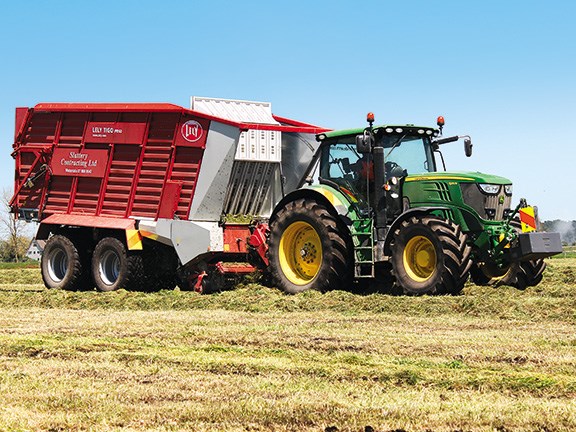

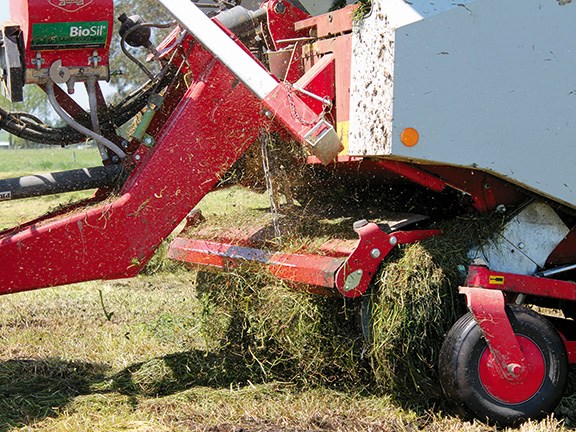 The seven rows of tines effectively collects the grass to feed into the cutting rotor.
The seven rows of tines effectively collects the grass to feed into the cutting rotor.

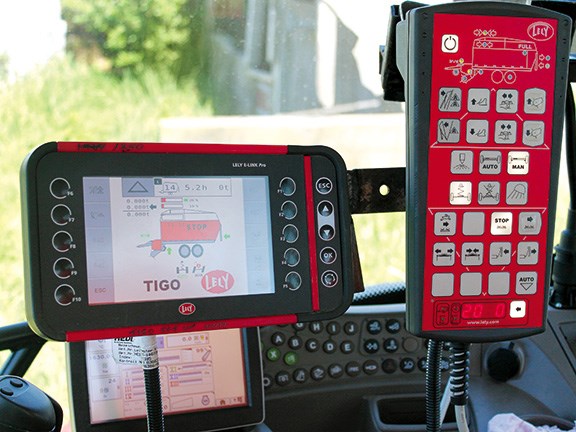 Automation and good control systems make the Tigo very easy to operate.
Automation and good control systems make the Tigo very easy to operate.

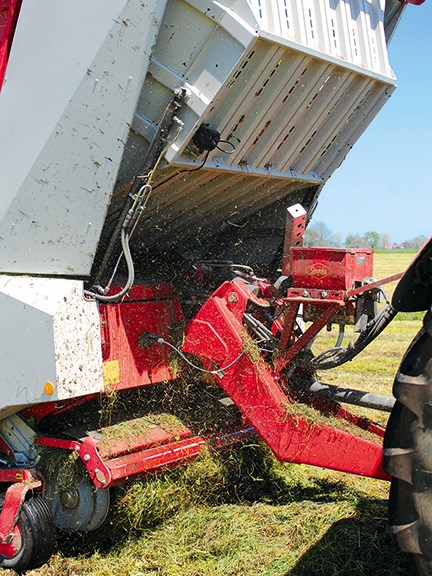 The moveable bulkhead in loaded position.
The moveable bulkhead in loaded position.



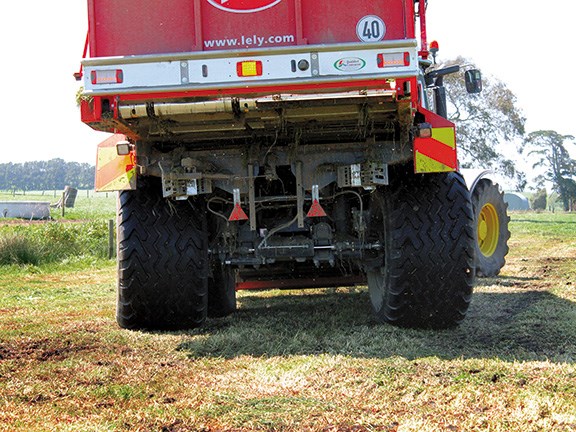

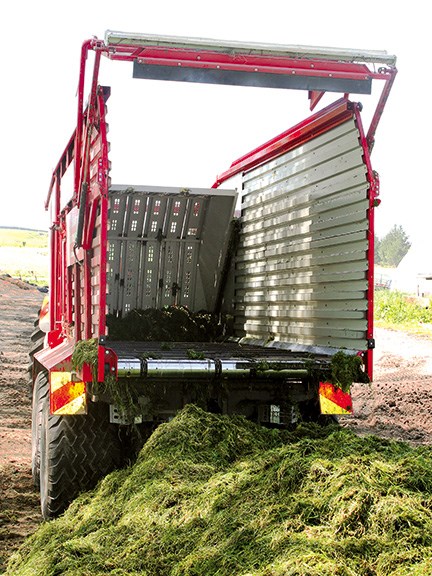


|

|
|
The seven rows of tines effectively collects the grass to feed into the cutting rotor.
|

|
|
Automation and good control systems make the Tigo very easy to operate.
|

|
|
The moveable bulkhead in loaded position.
|

|

|

|
It's all about machine design and systems that allow for increased ease-of-operation on Lely's Tigo PR 60.
Now that spring has arrived and grass growth has kicked into gear, silage season is upon us again. After a busy couple of months on the farm during calving, I was pretty keen to put on my Farm Trader hat and catch up with Matamata contractor, Roger Slattery and his new Lely Tigo PR 60 loader wagon.
Roger uses the Tigo PR 60 to help harvest surplus grass for local clients and turn it into the best quality silage possible.
The test
On a brilliant Waikato day I headed just north of Morrinsville to catch up with Len Copping, the main operator of the John Deere 6210R and Lely loader wagon combination. Len has been driving for Roger, contracting full time for nearly 10 years. Last season he operated one of two Strautmann wagons the company had. This year he has moved onto the new Lely Tigo PR 60 and has already clocked up over 200 hours.
When I arrived, they were working on a 25ha job before heading to another 25ha – already cut and waiting to be harvested – later that day. The property was typical peat country found around the area, with drains around each edge of the paddock. While I was there, Len was careful to stay away from the edges as best as possible.
The pick-up tracer roller fitted was very good on this country, protecting the pick-up to some extent. With the weight of the tractor leaving slight indentations and the guide wheels at a similar width, the pickup would have spent all day trying to dig up the paddocks.
We had spring pasture to harvest for the customer the day I caught up with the Slattery Contracting team. This client wanted his silage fine chopped, with all 45 knives in chop length is around 37mm, other clients prefer 74mm chop achievable with half the knives.
Knives are removed with the push of a button on the Isobus terminal or Lely E-Link Pro touchscreen. There are two controller options: the John Deere wasn't running the Lely through its Isobus system, but Len did have the same touch screen system available to him with the Lely E-Link pro terminal.
This system provides a very good visual of what's happening with the wagon full/empty/door open etc. Len also had the Tigo control unit which does everything the Isobus unit does with a touch key pad system. Both worked very well.

Operation
Lely has made operation incredibly easy with the new Tigo PR wagons.
Automation does a lot of the job for you: when you go from the road back to the field, if you lower the pickup it will automatically lower the goose neck on the drawbar.
Load sensors on the tilting bulkhead automatically control the four floor chains, moving them as required when set on either high or low compaction, to shift the load from the rotor to the back of the wagon. When the back of the wagon is full, it will tilt the bulkhead forward as that fills. With the wagon doing a lot of the jobs associated with loading, the operator just has to keep the tractor down the middle of the row for the pickup to collect.
Being about one metre shorter in overall length when compared with other similar capacity machines, with its steering rear axle the Tigo is pretty manoeuvrable for its size. This will keep farmers happy and make it easier for operators to squeeze in and out of tight gateways.
Pickup/Rotor
Like most manufacturers Lely has opted for a camless pick-up on its Tigo range of loader wagons.
The first thing noticeable about the Tigo pickup is how much quieter it is than the older Strautmann wagon the guys also had working on the same job.
The seven rows of tines with spacing of 54mm apart did an excellent job of collecting the rows. Pickup width on the PR model is 190cm which should handle picking up rows out to 2m wide. Lely has mounted the cutter rotor close in behind the pickup, helping feed throughput with lower power requirements thanks to the gear design.
Each cutter rotor is made in four pieces which can be removed and replaced without removing the whole rotor. The design could save a lot of time in the field should damage occur. The narrowest point is where the grass leaves the rotor and enters the bin of the wagon, with minimal lift required from the rotor to bin floor: feed is not damaged decreasing the quality. At 10km/hr with 9m of grass rowed up they never looked like blocking once.
Filling the wagon is pretty easy. On good ground Len said you could easily just keep filling the wagon until it was overflowing out the top. To date Len has harvested lucern, annual grass and spring pasture as we did the day I caught up with him, all of which the Tigo PR wagon has handled well.
Construction
One of my initial fears was what is the strength of the bin going to be like? Removing one side of a box will generally make it collapse, but Lely has this sorted with a big steel cross beam trough at the top of the bin for strength. This also acts as a stop for the moveable bulkhead when in the loaded position.
Closely placed steel stanchions are bolted to the chassis frame providing plenty of strength to the all-steel superstructure. Not relying on tubular ties and ropes across the top makes the Tigo range ideal for us as an extra bin next to the forage harvester for maize, a cover for the rotor can quickly be put in place and work can carry on.

Options
Given the size of the loader wagon market and the options available, most wagons are bought in to individual customer specification. For example you can get a standard tandem axle bogie set suspension, or opt for the hydro-pneumatic set-up with steering rear axle as Roger Slattery has on his machine.
The hydro pneumatic suspension provides increased safety while working on the sides of hills and automatic level adjustment irrespective of load offering full spring stretch for suspension at all times.
Not all people would require the weigh system that was fitted to this machine, but this can provide contractors and farmers with a greater detail of what is being harvested, helping farmers with nutrient budgeting and fertiliser requirements, or contractors with planning times and job costings.
The Gandy box is supplied by power through the wagon. When the pick-up is lowered, inoculant will be applied to the silage (conversely, when the pick-up is raised the inoculant won't be applied). Needless to say, this feature can save quite a bit of inoculant.
Lely Loader Wagons
Mengele Agratechnik was one of the early developers of the loader wagon and began selling loader wagons in 1963. By the mid-1960s they were selling 15,000-17,000 loader wagons per year.
In 2009 Lely purchased the Mengele business and continues to manufacture loader wagons from the Waldstetten factory in Germany.
The Lely policy of innovation has not been forgotten with its loader wagon range, with the design of the XR Tigo models with some of these new innovations and features (like built-in scales so you can weigh the actual amount of product harvested) now available on the PR Tigo range as well.
The verdict
Some of the simplest ideas are the best ideas, and the moveable bulk head of the new Lely Tigo PR range is quite a simple idea put together very well.
Offering more than the initial perceived benefit of greater load carrying capacity, it makes the machine more versatile as a transport wagon for working alongside a forage harvester for grass or maize.
Another benefit is the increased efficiency of less time unloading at the stack.
Innovation and constant improvement are key philosophies at Lely and even a quick look over their machines reveals that there is plenty of that built into the entire Lely Tigo Range.
I know for certain that at the moment the Lely R&D team will be very busy working on their continuous round baler prototype, as well as plenty of other ideas that I'm sure will help New Zealand farmers keep producing the best quality food to feed the people of the world.
Pros
- Ease of operation. Controls can be used through either isobus on tractor
- Increased capacity, up to 6 cubic meters over similar sized wagon, with clever use of moveable bulkhead and space closer to tractor over drawbar, while still maintaining max drawbar loading of 4000kg
- Quick unloading also due largely to the moveable bulkhead pushing the load out without loading up the floor chains
- Large machine capacity with a smaller size. Good for operators getting through tight gateways
Cons
- None
For the latest farming news and reviews, subscribe to Farm Trader magazine here.
Keep up to date in the industry by signing up to Farm Trader's free newsletter or liking us on Facebook



.jpg)




.jpg)
.jpg)
.jpg)

